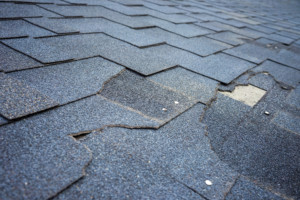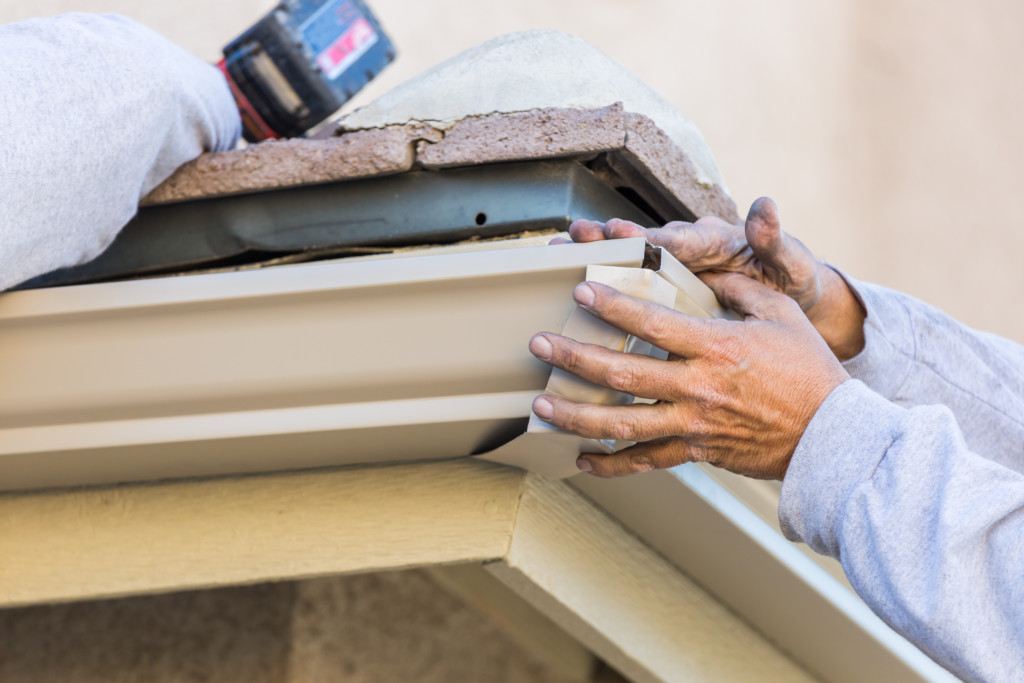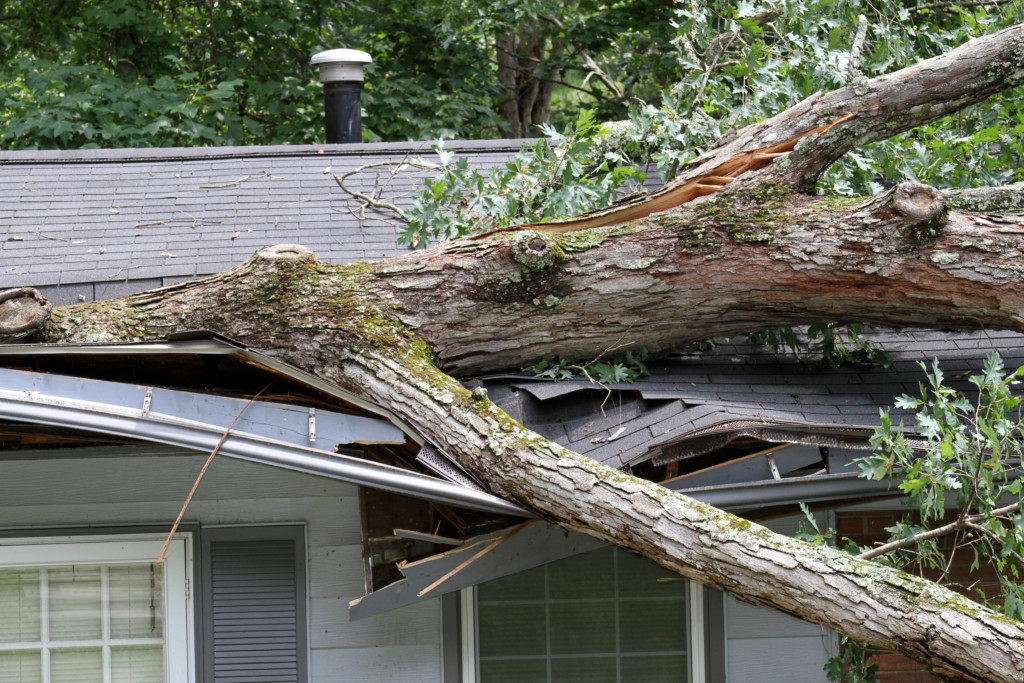Are you worried your roof was damaged by the last storm?
Walking through your backyard after a big storm can be both daunting and frustrating. A big storm can take a toll on your roof and cause some serious damage.
We know it’s difficult to spot roof storm damage, but it is crucial to find it and get it repaired as soon as possible. But don’t worry, we’re here to help. This checklist will help you identify storm damage and know when to call professionals for help.
Roof Storm Damage—What to Look For
There’s a lot to keep an eye out for after a storm rolls over your home. We know it can be overwhelming, but thankfully spotting the damage isn’t too difficult as long as you know what to look for.
Missing Shingles
One of the most obvious signs of storm damage is missing shingles. Shingles and other roofing materials are designed to withstand strong winds, but sometimes they can be knocked off during storms. Spotting a missing shingle isn’t too difficult and you should be able to see the dark spot on your roof, from the ground. Sometimes wind damage can create loose shingles which will need to be replaced before they fall off altogether.
Excessive Granule Loss
If your roof was hit hard enough during a storm, you might notice granules on the ground. This is could primarily be caused by a hail storm or tree branches rubbing against the asphalt shingles on your roof which can lead to the granules that help to protect your roof from wind and rain becoming damaged. These small pieces of sand and gravel will eventually wear off, but if they wear off too early in your roof’s life, there can be some serious damage.
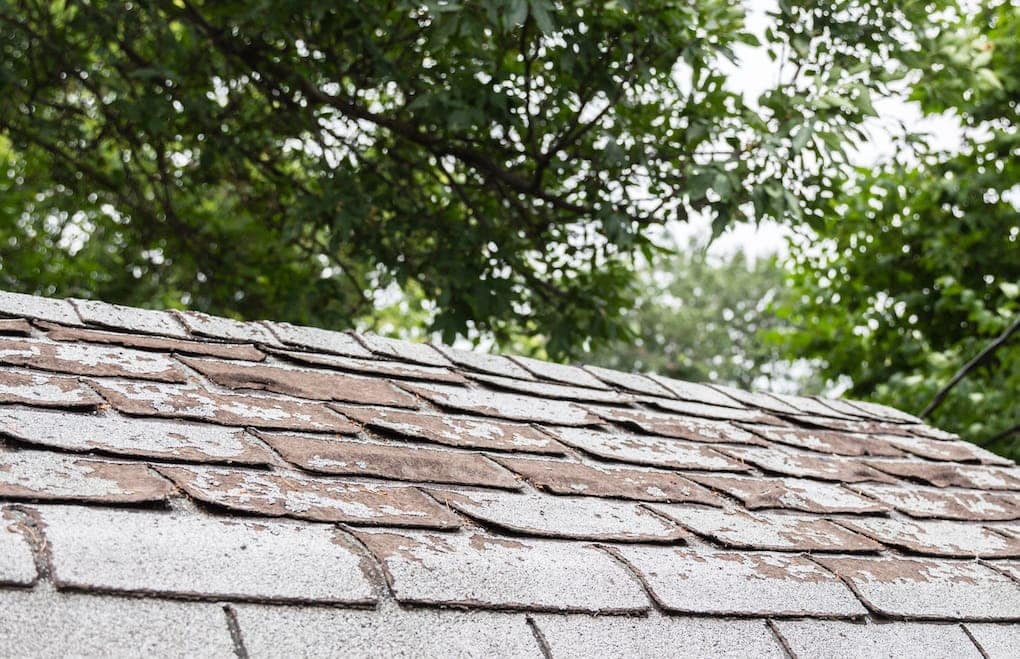
Water Damage (Poor Seals)
If rainwater from a storm has been able to easily seep into your home, likely, the roof is not properly sealed. As a result, chimneys, vents, soffits, and other similar areas require caulking. If the caulking and sealant wear out or come loose, you could start to see some significant water damage. Check out our post on how to spot roof leaks.
Dented, Cracked, Broken Shingles (Hail Damage)
If you live in an area prone to hail storms (most of the United States), you’ll know severe storms can often bring hail to dent or crack shingles. Hail damage can often also cause a ripple effect. Because of the cracks and dents in the shingles, strong winds can then more easily rip them right from your roof.
Clogged Gutters
A storm can cause some serious damage to your gutters, and if they’re not properly cleaned out and secured to your roof, you could lose the gutters and potentially have water leak into your home.
It’s unlikely that one storm will cause any serious damage to your gutters but neglecting them before a storm can. We recommend that homeowners regularly clean or have their gutters cleaned to prevent clogs. Contact K&D roofing for professional gutter services.
Moisture or Mold
If storm damage has left your roof with a leak, that can also mean moisture or mold is building up inside the walls and attic of your house. Many times you’ll be able to notice a leak because of the water dripping into your home. But, sometimes, it’s not quite that obvious.
Crawl into your attic space and check the area for mold or signs of excess moisture—it shouldn’t be too hard to tell. If you do recognize mold and moisture, then be sure to call a professional right away. You’ll want to get the leak fixed and any of the mold removed ASAP. Mold and mildew can cause severe allergies.
Leaks or Discolored Walls and Ceilings
Water that leaks into the walls or ceilings of your home can sometimes be spotted by water building up and other times from the discoloration caused by water stains. If you notice any discoloration, stains, or signs that there is a lot of moisture in an area, then it’s important to get this looked at by professionals right away before mold starts forming on your ceiling and walls.
Frequently Asked Questions:
We deal with roof damage all the time in our job, and we get asked about it even when we’re not on the job (the downside of being a roofer…). But, even with all of those questions, we’ve found that most homeowners aren’t informed enough on how their roof and roof damage works. To help you become more informed, here are some of the questions we get asked most commonly.
Can I spot the majority of storm damage on my own?
Most storm damage cannot be spotted by the untrained eye and should always be inspected by a professional. If you see any cracks in your shingles, large amounts of granules on the ground, or missing shingles, then it’s important to call someone for an inspection right away. Obvious signs of storm damage are easy to spot, but it’s the hard-to-spot damage that can really wreak havoc.
Do roofing companies help with insurance claims?
Insurance companies are notorious for trying to avoid storm damage claims. The best thing you can do to get your insurance claim approved is to have an inspection from a professional roofing company.
Having a storm damage inspection will allow you to show your insurance company that you have new storm-related damage to your property that needs to be fixed (assuming that you do in fact have storm damage). Regular inspections can also help with this by providing proof of your roof being up to snuff.

How soon after my roof is damaged do I need to file a claim?
Insurance companies will often put a limit on how long after storm damage you’ll still be able to get your roof repaired. It’s always best to file a storm damage claim as soon as you can after a storm. If your roof is damaged, it will need to be fixed as soon as possible, and the storm damage needs to be reported to your insurance company.
With the current covid situation, most roofing companies have a backlog of work. But that doesn’t mean it is not crucial to file a claim with your homeowner’s insurance. Having a claim filed will ensure that when your roofing contractor is available, you will be covered. Without filing a claim, you won’t be able to get insurance to help cover the cost of repairs.
Should I get a roofing inspection even if I don’t see any damage?
Just like we mentioned in the first question, sometimes you can’t spot storm damage right away. And, sometimes, storm damage can get progressively worse over time. That’s why it’s always a good idea to get an inspection.
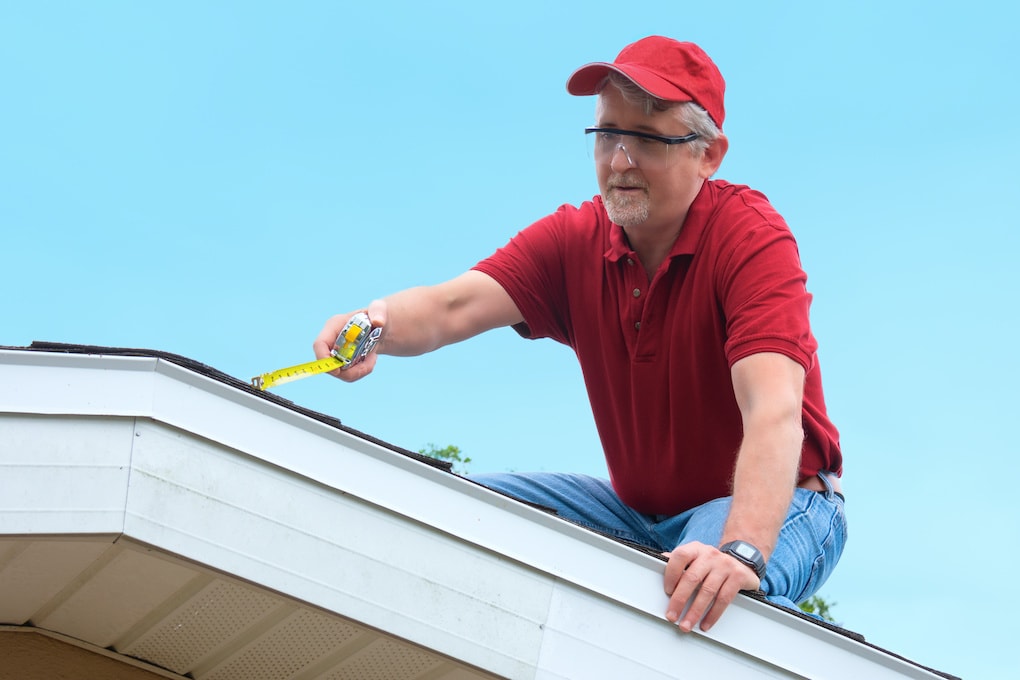
Contact K&D Roofing For Your FREE Roof Inspection!
If you’re looking for help getting your roof replaced or inspected, we’re here to help! The team at K&D Roofing offers best-in-class service and professional work that’s backed by our workmanship guarantee.


